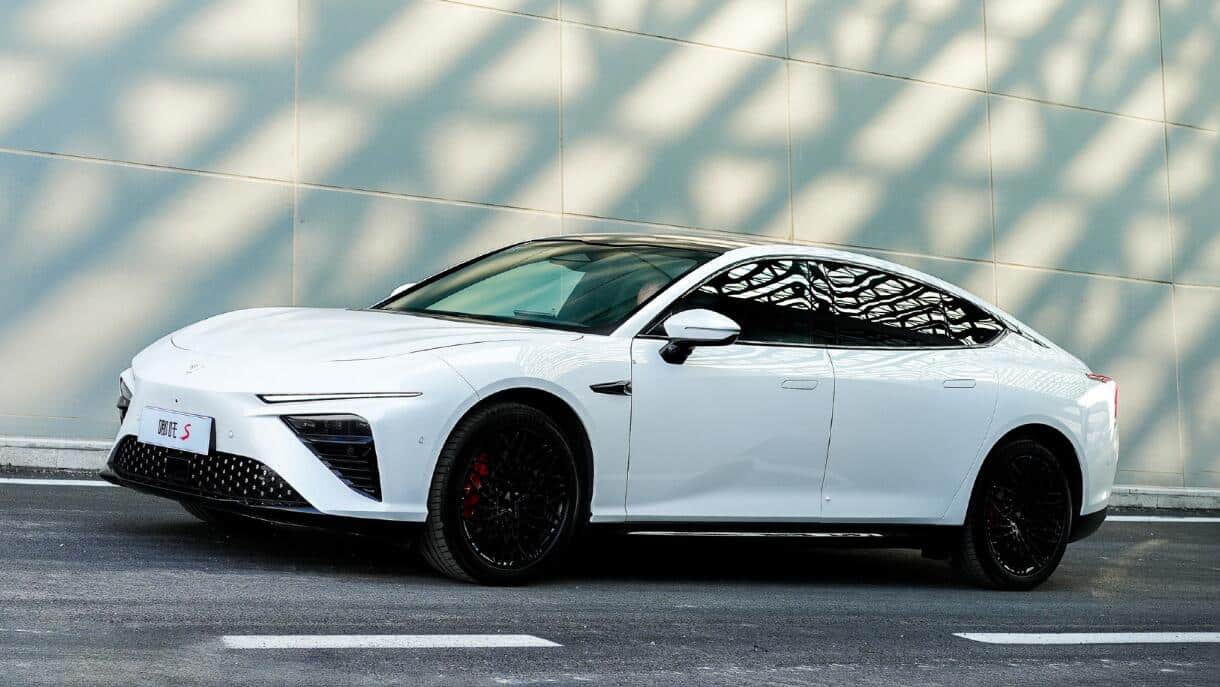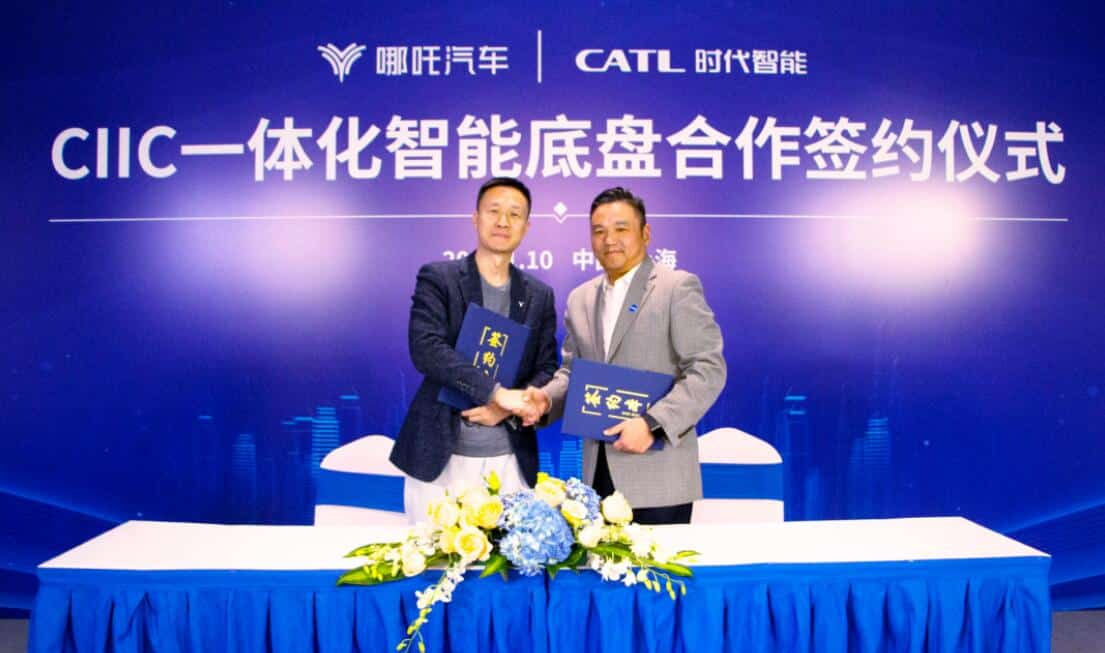The skateboard chassis enables a high level of integration never before seen in a car chassis, helping to significantly reduce development cycles and costs.
(File photo shows a Neta S sedan. Image credit: Neta)
Chinese power battery giant CATL appears to be upping the ante on skateboard chassis technology, with the first model using the technology expected to be announced next year.
Neta Auto, Hozon Auto's electric vehicle brand, announced today that it has signed a partnership agreement with a CATL subsidiary in Shanghai to work on the CIIC (CATL Integrated Intelligent Chassis) project.
Neta will be the first of the new Chinese car makers to develop an integrated intelligent chassis, with the first CIIC-equipped model due out as soon as the end of 2024, the company said.
The CIIC integrated chassis, commonly known in the electric vehicle industry as the skateboard chassis, is one of the key core technologies for electrification and intelligence in cars, Neta's press release said.
(Image credit: Neta)
As a revolutionary automotive chassis, the skateboard chassis achieves an unprecedented level of integration of all the capability modules of an electric vehicle, including the powertrain, braking system, steering system, and thermal management system, according to Neta.
With its rich modular configuration and multi-format platform, CIIC can significantly reduce the development cycle, and reduce development costs, while optimizing the vehicle layout, making the vehicle more spacious and flexible, Neta said.
CIIC uses CTC (Cell to Chassis) technology to integrate the battery cell into the chassis, which helps improve range and also allows the battery to be better protected, according to Neta.
In 2002, GM first unveiled the concept of a skateboard chassis with its Hy-wire concept car, which had a skateboard-shaped chassis where the body and chassis could be separated.
Since then, automakers including Canoo, Rivian and PIX Moving have launched skateboard chassis products covering different areas.
CIIC is a battery- and electric drive-centered, highly integrated electric chassis that integrates key components such as the battery system, electric drive system, thermal management system and wiring control system at the bottom of the vehicle without the need for a separate battery pack, Neta said in the press release today.
This helps reduce consumer acquisition costs and saves energy, improves range, and expands ride space, Neta said.
CATL also announced the partnership in its brief press release, saying it will help Neta build cars faster and at a lower cost, and will explore additional business model innovations together.
Notably, Neta is not the first car company to announce that it will use CATL's skateboard chassis.
On October 31, 2022, CATL announced that it had signed a Memorandum of Understanding (MOU) with Vietnamese electric vehicle company VinFast for a global strategic partnership in areas including CIIC skateboard chassis.
CATL will help the automaker expand in the global markets, the company said at the time, without revealing a timeline for the launch of models equipped with the CICC.
Late last month, a CATL subsidiary took a 7.65 percent stake in Bihu Technology, a local Chinese developer of skateboard chassis technology.
Neta is the electric vehicle brand of Hozon Auto, which was founded in October 2014. The first Neta model was launched in November 2018.
On November 8, 2021, CATL and Neta signed a strategic cooperation agreement to cooperate in technology development and supply chain security.
CATL will participate in Neta's D2 round of financing, according to a statement released by the latter at the time, which did not disclose the exact amount.
CATL will work with Neta to develop innovative integrated technologies for NEVs in addition to supplying it with power cells, the EV maker said at the time.


